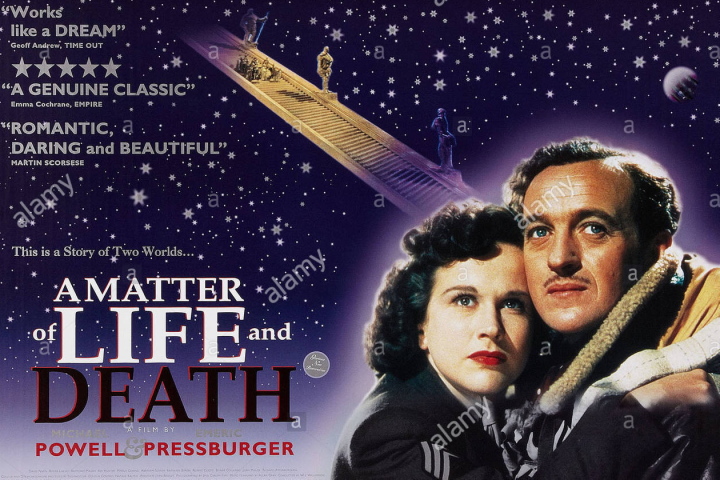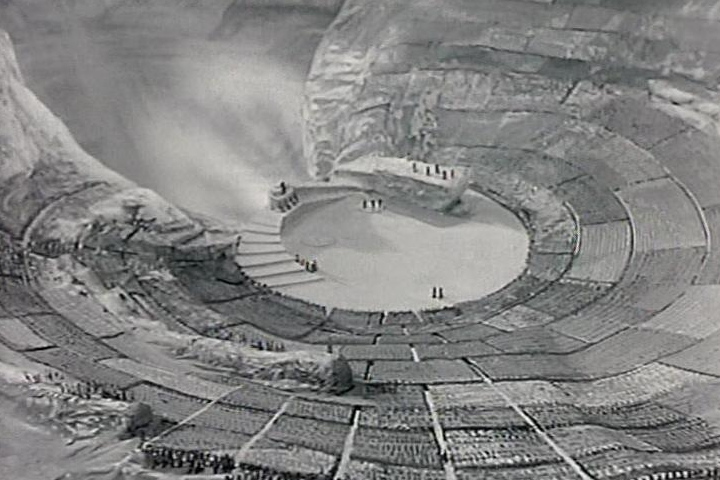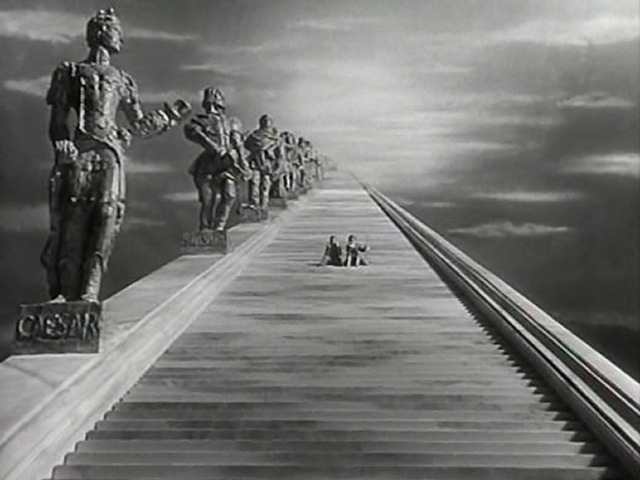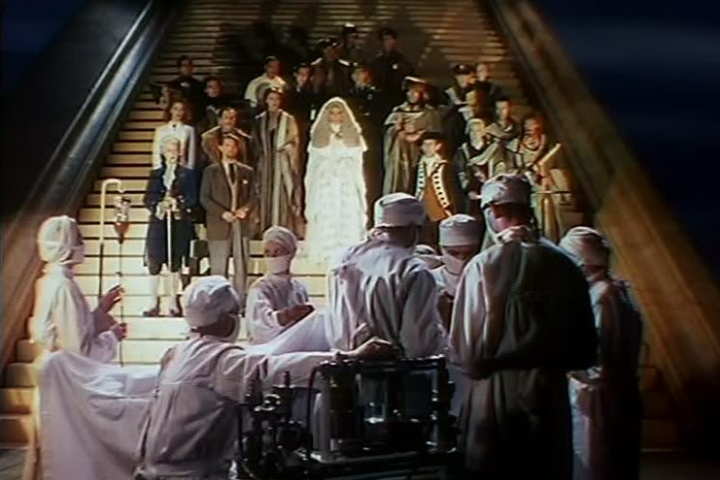A Matter of Life and Death (or Stairway to Heaven)
Genre: Fantasy/Romance. Year: 1946. Time: 104 min.
Filmed in back & white and in Technicolour; Country: United Kingdom
Introduction

This old English masterpiece has been re-introduced to the public back in the 2000s. The movie is cast with the WWII background when England was struggling to win the war against Nazi Germany and numerous servicemen were arriving from America and Canada. With the swelling of foreign population and the declining young men in Great Britain, romances and personnel tensions might be naturally occurring. The movie was starting to film about August 1945 and was designed a pro-American tone to improve the relationship between England and America. Some ones might detect a dislikable image of old gentleman in another post-war movie - A Wonderful Life (1946). The end of the movie reveals love is stronger than anything. One's love will compel one to sacrifice one's own life for his or her loved one that forces Heaven to change the rules.
The movie says "nothing is stronger than the law in the universe, but on Earth, nothing is stronger than love."
Cast
David Niven as Peter CarterKim Hunter as June
Roger Livesey as Dr. Frank Reeves
Raymond Massey as Abraham Farlan
Marius Goring as Conductor 71
Kathleen Byron as an Angel
Robert Coote as Flying Officer Bob Trubshawe
Narrated by John Longden
Information
The title of film - Staiway to Heaven in the United States & A Question of Life and Death in other European countriesDirected by Michael Powell, Emeric Pressburger
Written by Michael Powell, Emeric Pressburger
Produced by Michael Powell, Emeric Pressburger & George Busby
Distributed by Eagle-Lion Films (UK)
Filmed in back & white and in Technicolour: "other world" in black & white; "other world" in colour
Released in 19461. Running Time: 104 minutes. Award: Bodil Award for Best Non-American Film
Outline
The movie starts with a cosmos scene of the universe, scanning from right to left while showing the glowing, exploding light and matter of dying stars and ending to the Earth. On a certain day in 1945, a Lancaster bomber is struggling to fly back to England from a mission over Germany. The plane is badly damaged and is alight. Only the pilot remains in the plane; his flying officer is dead and his crew has already bailed out at his command. As trying to make a contact with his base, he makes a radio connection with an American female radio operator based in England. Before he jumps from the plane on fire, he asks her to send some messages and then tells her he has no parachute. Later, a body floats on the English beach. It is the pilot - Peter. He survives and meets the American radio operator, June, on the country road just off the beach. It is love at first sight.
The film then switches from colour to black and white, showing the waiting area for the dead ones to enter the other world. Peter should have been dead, but Conductor 71, a guide that is sent to escort him, misses him because of foul weather over the English Channel. It is a rare mistake and Conductor 71 is asked to return to our world to retrieve Peter. Peter refuses to go as he has already fallen in love with June. He blames the conductor for the mistake and asks for an appeal for his ended fate. Conductor 71 leaves and later returns to inform Peter that the Supreme Court of the other world has accepted his appeal and orders a trial.
Peter and June both appear before the jury of the court. The jury rules in their favour. They win the case and Peter can continue to live in our world.
[Top|Bottom]
Still Photographs from the Film
 |
 |
 |
 |
Full Length of the Film (1 hr 45 min)
References:
[1] Article in The Guardian[2] Wikipedia